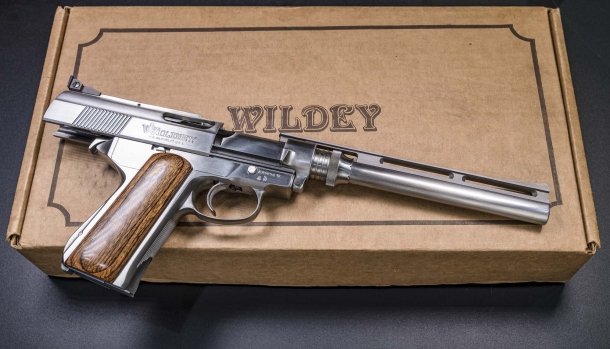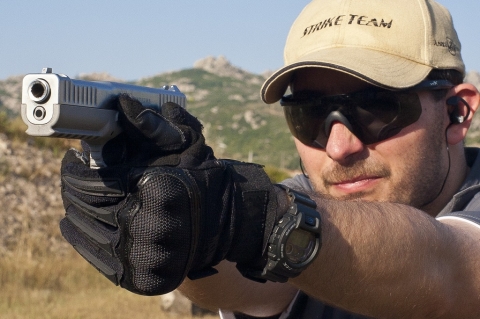Wildey Survivor pistol: the first, the great, the original
The Wildey Survivor was the first large-caliber gas-operated pistol built for hunting and sport shooting: the peculiar design and high performance made it an icon of the gun industry and an international movie star, a true cult object

Before the Desert Eagle came to rule, it was the Survivor’s time: designed in 1973 by American engineer Wildey J. Moore, the Wildey Survivor still holds a dear place in the hearts of gun enthusiasts as well as in the popular culture – chiefly due to its appearence in the movie Death Wish 3, where star Charles Bronson used his own Survivor pistol in some of the most pivoting scenes.
The unique design and looks surely played a key part in turning the Wildey Survivor into the icon that it is today: almost completely manufactured out of stainless steel, with a SA/DA trigger and a decocking lever, the Wildey Survivor featured a frame patterned after the 1911 design and a massive slide; together, they were 5” (127 mm) long, and this without the fixed barrel, available in eight different lengths ranging between 5” (127 mm) to a whoopping 18” (457 mm); all barrels featured a front post mounted on a raised, ventilated rib to facilitate alignment with the adjustable rear sight, and were interchangeable upon field-stripping.
In the minimum barrel length configuration, and sans the optics mounting interface it was ready to accept, the Wildey Survivor weighed in at 4 lbs (1,8 kg): that’s really something!
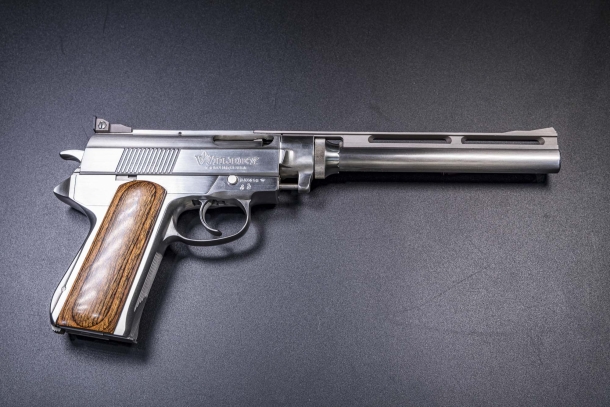
Wildey Survivor: la prima, la grande, l’originale
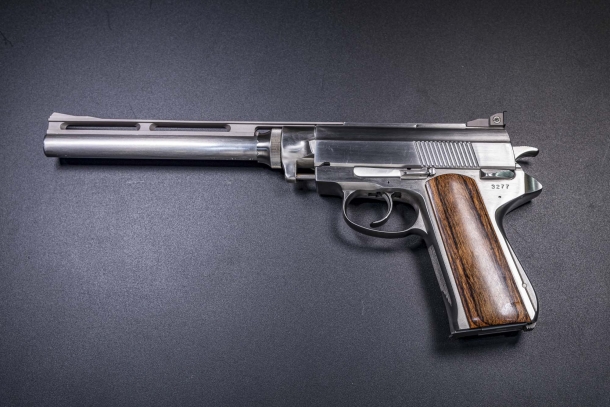
Wildey Survivor: la prima, la grande, l’originale
Contrary to populary belief, the Wildey Survivor (as all other similar “hand cannons”) was never conceived to be a personal defense weapon, but chiefly a hunting firearm, with a niche sporting purpose in metallic silhouette shooting competitions.
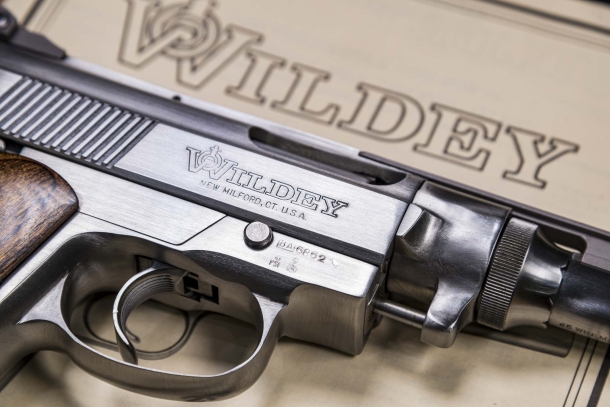
That kind of use requires both accuracy – provided for by the fixed barrel layout – and performance, at least at mid-range, hence why the Wildey Survivor was offered in a plethora of Wildcat chamberings including 9mm Winchester Magnum, .357 Wildey Magnum .41 Wildey Magnum, .44 Auto Mag, .44 Wildey Magnum, .45 Winchester Magnum, .45 Wildey Magnum, and most important of them all, .475 Wildey Magnum – a cartridge based on a case formed by cutting down .284 Winchester brass to .45 Winchester Magnum length.
The average velocity of .475 Wildey Magnum at 100 yards is about the same as a .44 Magnum at the muzzle; such a round requires a gun that would withstand extremely high levels of pressure, hence why the action of the Wildey Survivor is built to withstand pressures exceeding 48.000 PSI at the breech.
In all variants, the Wildey Survivor feeds through seven- or eight-rounds single-stack magazines; the magazine release catch is located under the mainspring housing – “European-style”, as it’s known in America.
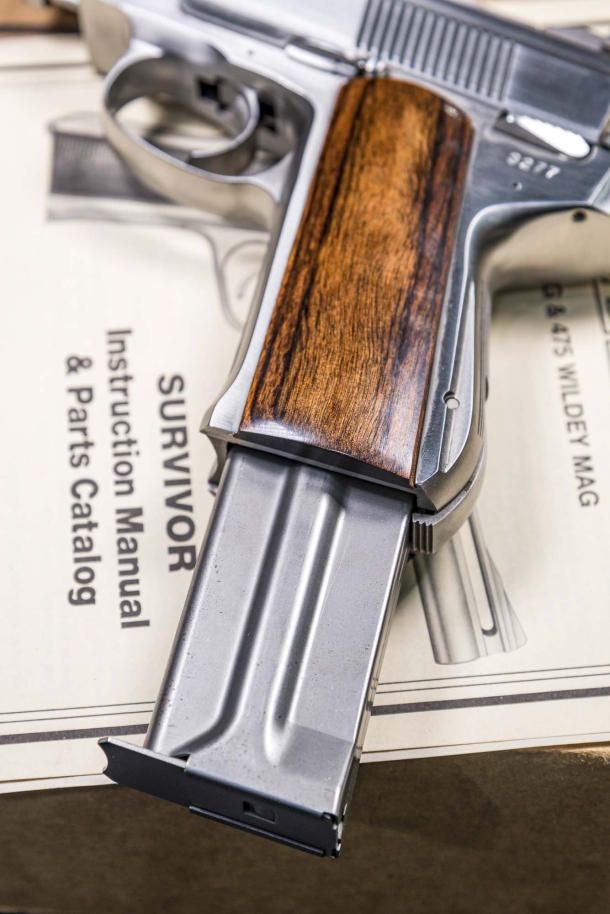
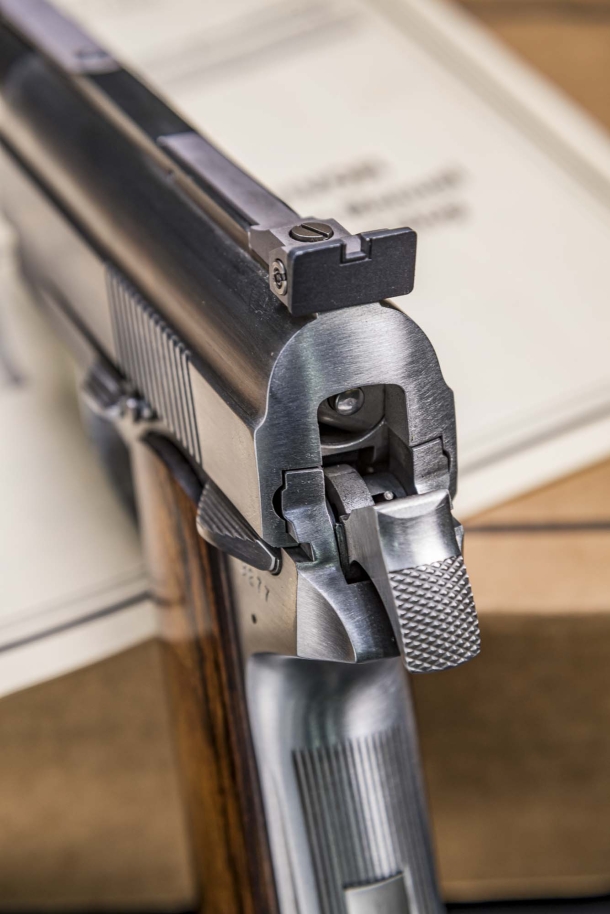
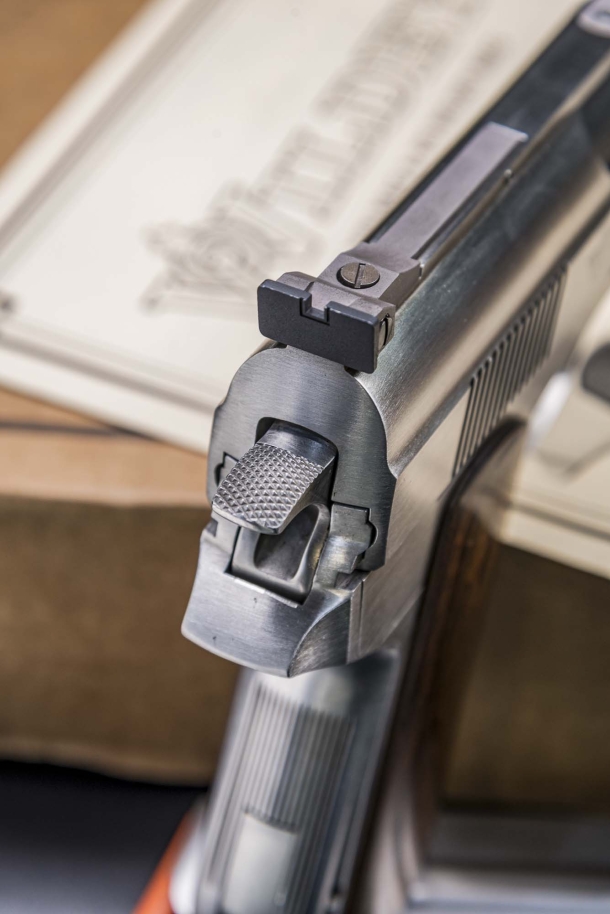

La Wildey Survivor non fu la prima “pistolona” progettata per questi scopi ad offrire una serie di caratteristiche specifiche di questo tipo. La Wildey Survivor infatti, aveva attirato l'attenzione del grande pubblico quando Charles Bronson la utilizzò nel terzo episodio de Il Giustiziere della Notte 3 (Death Wish, 1985). Ma già due anni prima, nel film Coraggio, fatti ammazzare (Sudden Impact, 1983) Clint Eastwood si era armato con una AutoMag, il cui progetto risaliva a circa dieci anni prima rispetto a quello della Wildey Survivor. La Wildey Survivor tornò poi sul grande schermo nel 1994, nelle mani di Woody Harrelson nel film Natural Born Killers.
The Wildey Survivor was not the first "big gun" designed for these purposes to offer a series of specific features of this type. In fact, the Wildey Survivor had attracted the attention of the general public when Charles Bronson used it in the third episode of Death Wish 3 (1985). But already two years earlier, in the film Sudden Impact (1983) Clint Eastwood had armed himself with an AutoMag, the design of which dated back to about ten years before that of the Wildey Survivor. The Wildey Survivor then returned to the big screen in 1994, in the hands of Woody Harrelson in the film Natural Born Killers.

Wildey Survivor e Charles Bronson (Il Giustiziere della Notte 3, 1985)
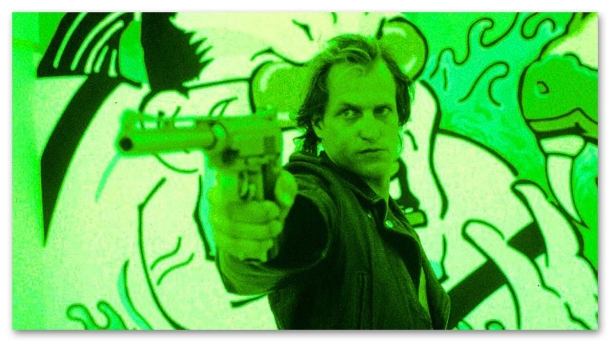
Wildey Survivor e Woody Harrelson (Natural Born Killers, 1994)
Anyway, the Wildey Survivor was the first to be made available in a wide array of unusual, high-power chamberings and to feature a specifically conceived working system that would make it 100% reliable. Predating the Desert Eagle, the Wildey Survivor was the first handgun to feature a rotating bolt with three locking lugs and a gas operating system – something more akin to a rifle than to a conventional handgun – described in Moore’s own patent as an:
“air-hydraulic piston powered by the firing gases through six small holes in the barrel. This piston forces the slide rearward, initiating the cycling of the pistol”.
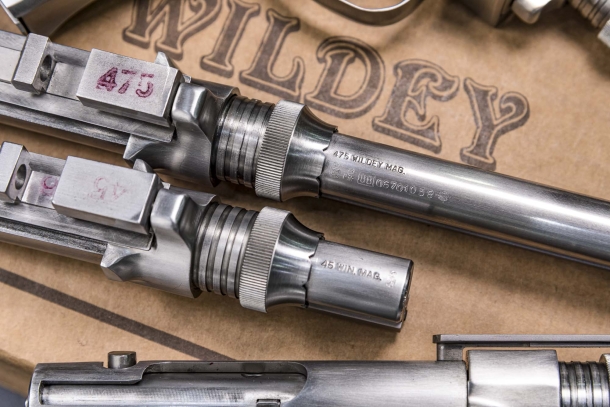
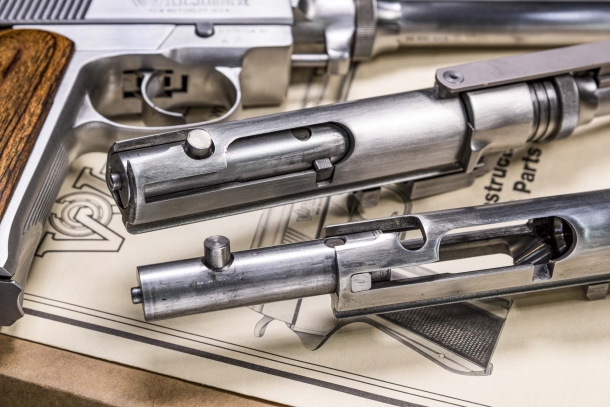

The chief feature of the peculiar Wildey gas system is the collar-shaped, manually operated regulator located at the base of the barrel; by allowing the shooter to manually “dial in” the quantity of gas that enters the system, the Wildey Survivor can be customized to reduce felt recoil and perform reliably regardless of the caliber and load used at any given moment.
The gas valve collar can also be closed, turning the Wildey Survivor in a single-shot pistol for those hunting or sporting applications where the use of semi-automatics is not allowed.
Today, like many other weapons of this type and era, the original Wildey Survivors (like the one in the photos on this page) are an object of interest to collectors. But in 2019 the brand came back to life, taken over by USA Firearms Corp. which put this mammoth semi-automatic pistol back into production.
